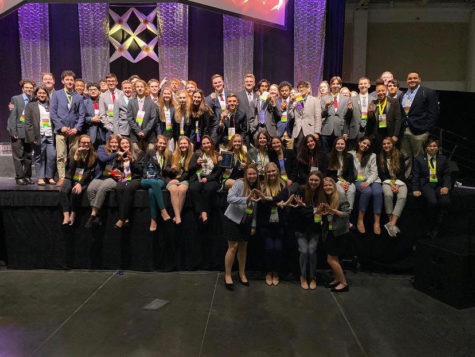Blood Drive
Riverbend SCA hosted the annual winter blood drive on Wednesday, December 6, 2017 from 8am to 2pm in the Lecture Hall. There have been 5 blood drives so far in Riverbend history with mixed blood drives: The winter drive in December and a Spring one which takes place usually in either April or May. Ms. Espitsito, a new history teacher, is helping with the blood drive along with science teacher, Ms. Greenlaw, said that 64 people signed up to donate blood. Both Ms. Keohane, the Algebra teacher, and Mr.Wessel, AP Government teacher, have also donated blood every year. People may donate if they are at least 17 years old (16 years old with written consent from parent or legal guardian), and weigh at least 110 pounds depending on gender and not on any medication. Donors of the age 76 and older can continue to donate blood if they meet all donor criteria and present a physician’s letter allowing them to donate. Ms. Espitsito said that before donors get their blood taken, they should, “eat a good breakfast in the morning and drink lots of water a couple days before.”
Many people don’t know the history of how donating blood started: In 1937, Bernard Fantus, director of therapeutics at the Cook County Hospital in Chicago, established the first hospital blood bank in the United States, creating a hospital laboratory that preserved, refrigerated, and stored donor blood. Fantus originated the term, “blood bank.” Blood banking began growing in earnest with the return of physicians who had seen the effectiveness of transfusion therapy on the front lines in World War II. They began to demand that blood be made available for treatment of their patients.
When donating blood a person burns about 650 calories with every pint donated, since the body has to work to replenish itself. Though there are many benefits to donating blood just one time, the people who benefit most from blood donations are regular donors. Type O-negative blood is the universal donor because it is compatible with any blood type. Type AB-positive blood is the universal recipient because a person who has it can receive blood for any type. According to the American Red Cross, the rarest is AB -, present in 1% of the Caucasians, in African Americans it is even rarer. B- and O- are also very rare, each accounting for less than 5% of the world’s population. O+ positive counts for 38% of the world’s population.
Even though donating blood is simple thing to do and may not sound like much, it’s just one of the many ways of how lives are saved. Shamari Ellis, a senior at Riverbend said, “I don’t like needles, so I’m going against my fear. I want to help people out and save a life. It feels good, plus you get food.” Breanna Burnett, a sophomore said, “I thought it would be good to help people out. Donating blood, to me, is the ability to help other people.”



